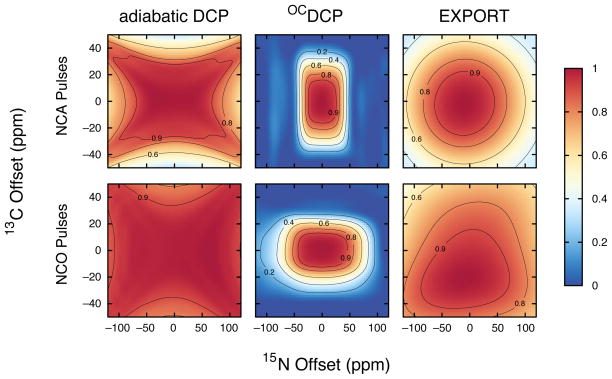Figure 5.
Simulated NCA and NCO normalized transfer efficiencies for adiabatic DCP, OCDCP, and EXPORT as a function of 15N and 13C chemical shift offset at 700 MHz for 1H and with νr=14 kHz. Although OCDCP pulses cover a much narrower range of offsets than the other two transfer methods, the range is more than adequate for the range of offsets expected for Co, Cα, and N resonances in biological samples. The well-defined chemical shift offset range of the OCDCP pulses should result in cleaner selection of different regions of the spectrum than the other two methods, which can be an advantage is some situations. The simulations use a 13C-15N two-spin system and a 8% gaussian RF inhomogeneity profile. The transfer efficiencies are normalized such that, for each graph, the maximum transfer efficiency is set to 1.0. The normalization scale factors (i.e., the maximum absolute transfer efficiency) for NCA simulations were 0.35, 0.59, and 0.32 for adiabatic DCP, OCDCP, and EXPORT, respectively and for NCO simulations were 0.56, 0.66, and 0.28 for adiabatic DCP, OCDCP, and EXPORT, respectively.

